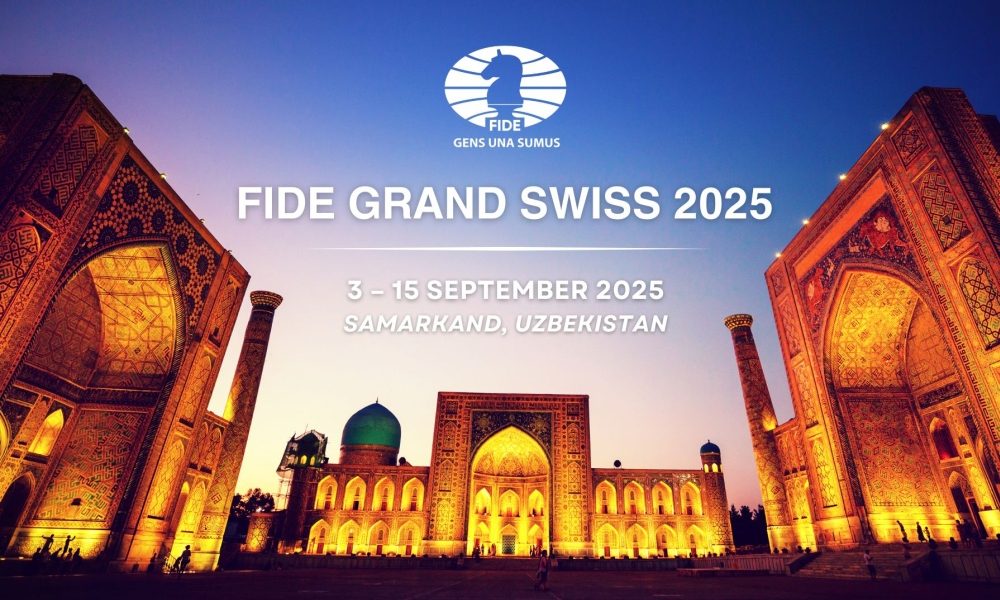
In the ancient, history-rich city of Samarkand, Uzbekistan, a modern saga is unfolding on the chessboard. The FIDE Grand Swiss and FIDE Women`s Grand Swiss 2025 have commenced, bringing together a formidable lineup of grandmasters from across the globe. This isn`t just another chess tournament; it`s a critical proving ground, a relentless 11-round battle where intellect and nerve will determine who advances one step closer to the ultimate prize in chess: the World Championship title.
The Stakes Are Higher Than Ever: A Direct Path to the Candidates Tournament 2026
For any ambitious chess player, the journey to becoming a World Champion is arduous, fraught with complex qualification paths. The Grand Swiss tournaments represent a beacon on this challenging road. The most significant aspect of these events is undoubtedly the reward: the top two finishers in both the Open and Women`s sections will earn coveted spots in the 2026 Candidates Tournaments.
The Candidates Tournament itself is the penultimate stage, where eight elite players vie for the right to challenge the reigning World Champion. To secure a place directly from the Grand Swiss is to bypass numerous other qualification hurdles, a testament to the intensity and prestige of this 11-round marathon. It`s a high-stakes poker game, but with 64 squares instead of cards, and the bets are made with strategic foresight and calculated risks.
Tournament Format: A Marathon of the Mind and Mettle
Both Grand Swiss tournaments are structured as 11-round Swiss opens, a format designed to ensure a fair yet challenging progression. Players are paired against opponents with similar scores, intensifying the competition as the tournament progresses. The classical time control adds another layer of pressure, demanding endurance and precision:
- First 40 moves: 100 minutes
- Next 20 moves: 50 minutes
- Remainder of the game: 15 minutes
Crucially, a 30-second increment is added from the very first move, a small but vital buffer that can prevent last-minute blunders under extreme time pressure. When points are tied, the first tie-break criterion is the Average Rating of Opponents Cut 1 (AROC 1) – essentially, removing the lowest-rated opponent`s rating from the calculation to favor players who faced stronger competition throughout.
A Glimpse into Round One: Early Tensions and Tactical Battles
As Round 1 commenced on September 4th, the tension was palpable. The first moves often set the tone, with players testing their initial strategies and feeling out their opponents. Early results already hinted at the fierce competition:
A notable draw was recorded between Matthias Bluebaum (2671) and Alexandr Predke (2609), an early demonstration that even seasoned grandmasters can be held to a stalemate from the outset. Meanwhile, top seeds like Alireza Firouzja (2754), Erigaisi Arjun (2771), and Nodirbek Abdusattorov (2748) embarked on their campaigns, facing strong opposition in Bassem Amin (2636), Maksim Chigaev (2638), and Velimir Ivic (2630) respectively. These early encounters are less about decisive victories and more about laying the groundwork, conserving energy, and avoiding unforced errors.
The playing hall is packed with numerous other world-class talents, including Vincent Keymer, Levon Aronian, Shakhriyar Mamedyarov, Hans Niemann, Vidit Gujrathi, and Nihal Sarin, each with their own aspirations and strategies. Every game, every half-point, will be fiercely contested over the coming days.
The Women`s Grand Swiss: A Parallel Battle for Supremacy
Running concurrently with the Open section, the FIDE Women`s Grand Swiss is equally significant. Female grandmasters are engaged in their own intense battle for the two spots in the Women`s Candidates Tournament 2026. This parallel event ensures that the path to the Women`s World Championship is just as competitive and exhilarating, showcasing the depth of talent in women`s chess.
Samarkand: A Historic Backdrop for Future Legends
The choice of Samarkand as the host city adds an intriguing layer to the tournament. A city steeped in centuries of history, a crossroads of ancient civilizations and trade routes, now hosts a different kind of strategic battle. It’s almost poetic: a place where empires once rose and fell due to strategic prowess, now witnesses grandmasters plotting their moves on a board, hoping to carve out their own piece of chess history. One can only wonder if the echoes of ancient Silk Road traders whisper strategic advice to the players, or perhaps just remind them to stay hydrated.
The Road Ahead: Daily Battles and a Crucial Rest
The tournaments are scheduled to run daily from September 4th until September 15th, offering a relentless schedule for the participants. A much-needed rest day is planned for September 10th, providing players a brief respite to recharge, analyze their games, and prepare for the final, decisive rounds. The coming days promise an electrifying display of top-tier chess, with dreams forged and shattered across 11 rounds of intense mental combat.
Chess enthusiasts worldwide will be keenly watching, as the Grand Swiss 2025 unfolds, revealing the next contenders for the highest honors in the world of chess.










